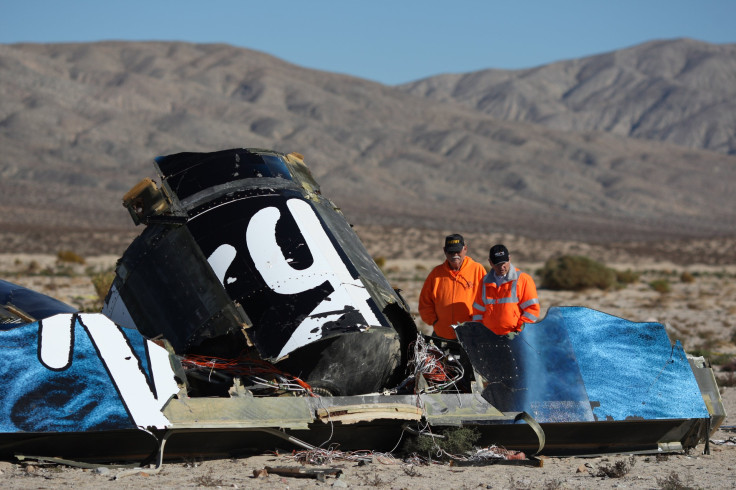Virgin Galactic Crash: NTSB Blames Pilot Error And Poor Training For SpaceShipTwo Crash

Investigators have found that pilot error and poor training may have caused the Virgin Galactic’s SpaceShipTwo crash in Southern California’s Mojave Desert during a test flight last year. The National Transportation Safety Board (NTSB) released a report Tuesday on the October 2014 crash that killed test pilot Michael Alsbury and injured co-pilot Peter Siebold.
The premature unlocking of the hinged tail section by Alsbury triggered a mid-air break-up of the commercial space plane, NTSB said in a statement. The board strongly condemned the aerospace company Scaled Composites, which manufactured the spacecraft, for not building safeguards into the controls and procedures of the plane.
“Many of the safety issues that we will hear about today arose not from the novelty of a space launch test flight,” Christopher A. Hart, the board’s chairman, said in a conference in Washington, revealing the findings, “but from human factors that were already known elsewhere in transportation."
An external review team is reportedly assessing the safety of Virgin Galactic and the spaceship company’s engineering, flight test and operations.
"It is our hope that, through this investigation, we will find ways to prevent such an accident from happening again," Hart reportedly said.
The NTSB had earlier concluded that the craft’s “feathering” system, which controls the wings position for the ship’s re-entry, was found to be unlocked about nine minutes after ignition, before the vehicle reached the desired speed.
In its latest report, the NTSB found that “the probable cause of this accident was [Virgin Galactic contractor] Scaled Composites’ failure to consider and protect against the possibility that a single human error could result in a catastrophic hazard to the SpaceShipTwo vehicle," Virgin Galactic wrote in a statement on Tuesday. "This failure set the stage for the copilot’s premature unlocking of the feather system as a result of time pressure and vibration and loads that he had not recently experienced, which led to un-commanded feather extension and the subsequent aerodynamic overload and in-flight breakup of the vehicle," the company added.
The NTSB also criticized the Federal Aviation Administration, which oversees commercial spaceflight in the U.S., for approving the test flight and failing to recognize the potential danger.
“We remain fully committed to our goal of democratizing space with our human spaceflight program and our satellite launch program,” Virgin Galactic said in the statement, after the release of NTSB’s report on the Oct. 31, 2014, crash. “We will take the time to fully digest the @NTSB findings and recommendations. Wherever there is room for improvement, we’ll make it.”
Though the @NTSB provided no recommendations for us, we know that moving forward, the responsibility for safety is ours.
— Virgin Galactic (@virgingalactic) July 28, 2015With impartial experts from @NTSB having found the #SpaceShipTwo design fundamentally sound, we move forward with confidence.
— Virgin Galactic (@virgingalactic) July 28, 2015© Copyright IBTimes 2024. All rights reserved.



















